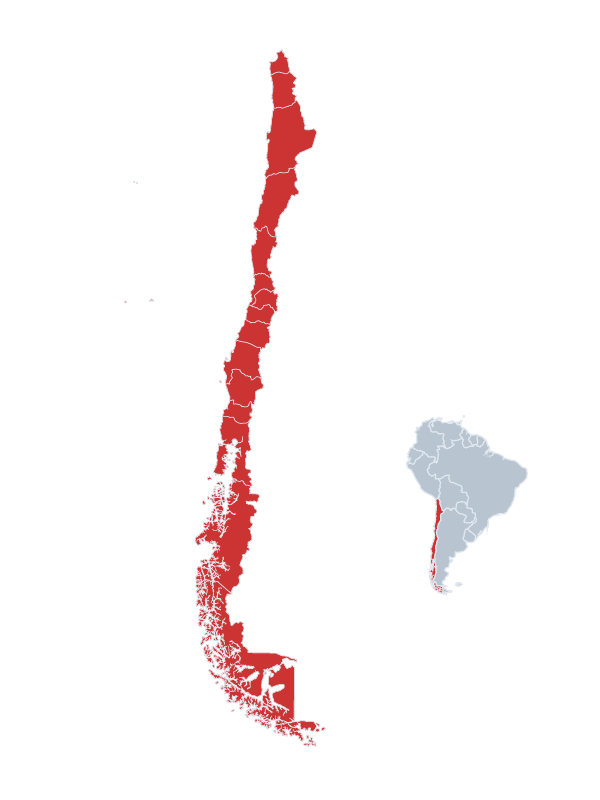South Patagonia / Puerto Natales
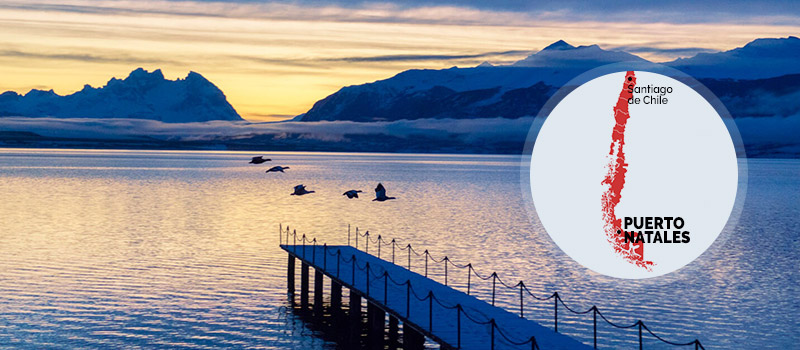
Capital of the province of Ultima Esperanza, located on a gentle slope at the edge of the Señoret channel, on the horizon the silhouette of the Cordillera de los Andes, with a glimpse on the Paine massif and the South Ice Field glaciers. Puerto Natales is also the port of departure for the livestock production of the zone, gateway to the Paine Towers National Park, day navigations to the Serrano and Balmaceda glaciers, and finally, towards El Calafate in Argentina for visit to the immense Perito Moreno glacier.
What can we do in Puerto Natales ?
-
Full Day Paine Towers National Park
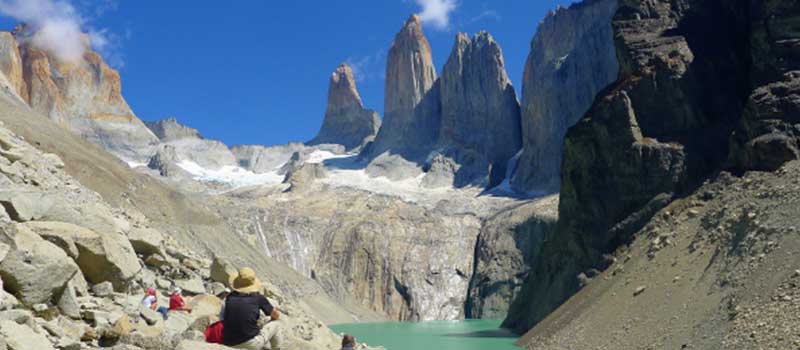
The excursion begins visiting the Milodon Cave, a natural monument located on Benitez Hill, 25 km from Puerto Natales. The cave discovered in 1895 by German marine merchant Hermann Eberhard, had remains of milodonos, herbivorous mammals of great dimensions, which probably became extinct during the Pleistocene, (geologic time starting 2.59 million years ago and ending approximately 10,000 b. C). It is necessary to walk for approximately 30 minutes to go into the cave to observe a full replica of the Milodon. After a technical stop at the village of Cerro Castillo, to enjoy a steaming coffee, or just for a break, continue the trip towards the Torres del Paine National Park. Here visitors will be able to enjoy a most diverse landscape - the Magellan forest and the vast Patagonia steppe – with a view on two species of the local fauna: the Patagonian guanaco, Southamerican camel and relative to the llama, and the endemic Darwin's rhea (Ñandu), relative to the African ostrich. Once in the park, a Biosphere Reserve with a surface over 242.000 hectares, the landscape changes dramatically due its blue lakes populated by marine birds and in the background, the imposing granite peaks dominating the area. Turquoise lakes, waterfalls and mountains covered by ice is the predominant landscape inside the park. A 15-minute walk is necessary to approach the Salto Grande waterfall; which communicates two big lakes inside the park; Nordenskjold and Pekoe. After lunch, the trip continues with a walk on the shores of the Grey Lake, to view blue icebergs and in the background, the vast Grey glacier. Depending on requirements, the return trips can be backtracking the same road, or by the new road bordering lakes Toro, Porteño and Sofía.
-
Serrano & Balmaceda Glaciers
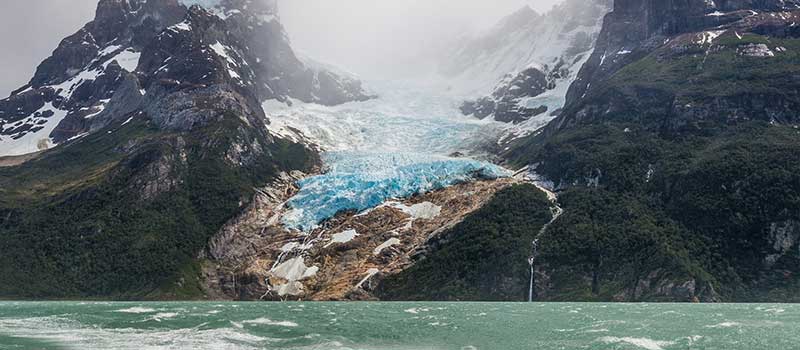
Access only by sea through the Seno de Ultima Esperanza, starting at the Puerto Natales pier to observe the flora and the fauna of the fjords, sea lions, cormorants, ducks quetru, condors, and gulls. Along the coast, the ship approaches a rocky area, place of mating of sea lions during summer. On the eastern slope of the Monte Balmaceda (2035 m), the colossal Balmaceda glacier comes into view, presently recoiling as almost all the glaciers of the planet. After docking at the Toro pier, a hike of 1,000 m. across a native forest until reaching the shores of the lagoon dotted with icebergs and at the foot of the beautiful Serrano glacier. The return trip to Puerto Natales made by the opposite bank of the Seno de Ultima Esperanza.
* Season from September to March.
-
Grey Glacier
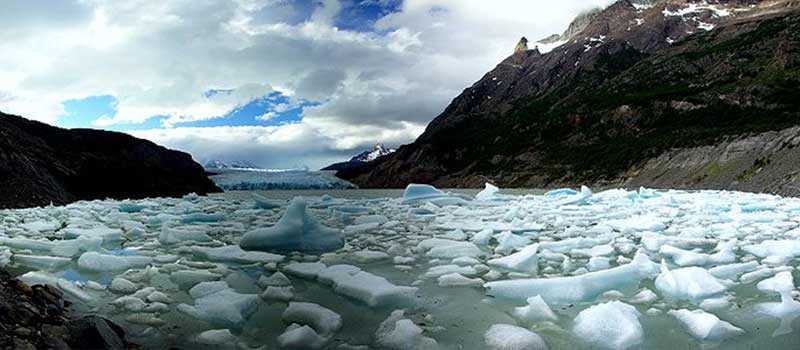
Born in the Campo de Hielo Sur, (Southern Ice fields), is a 4 km wide and 30 m high mass of ice It is divided in two fronts by a nunatek, or island which appeared after the ice retreated some 50 years ago.
* M/V Grey makes the navigation of the lake between the Grey Hotel and the glacier.
-
Full Day Perito Moreno Glacier (el Calafate, Argentina)
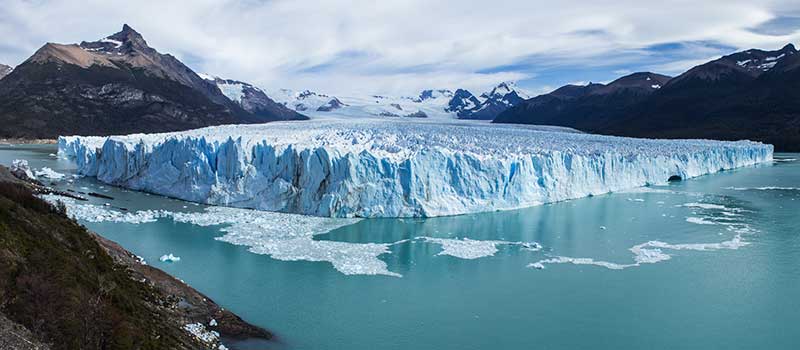
This excursion departs from Puerto Natales very early in the morning. After crossing the border, the dominant landscape will be the vast and windy steppe, with view at the distance over the Argentino Lake and the Santa Cruz River, on the way to the Atlantic Ocean. The excursion to the Perito Moreno glacier begins at El Calafate, accessing the area by walkways with a series of stairways that connect various views.
Note: Full day approx. 12/14 hours’ drive from Puerto Natales to the Los Glaciares National Park, 360 km approx. 5 hours. At the Cerro Castillo, border police/customs formalities performed. From El Calafate approx. 80 km to access the Park.
South Patagonia / Torres del Paine
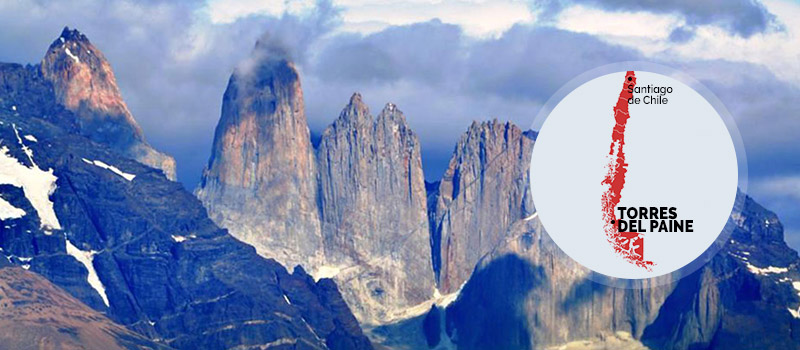
Patagonia´s treasure – pristine nature in the Torres del Paine National Park. Patagonia’s most iconic backdrop is the jewel in its crown, dominated by immense, granite towers. The park offers the bright turquoise Nordenskjöld Lake and gives the opportunity of getting into the gorgeous French Valley, with well-equipped refugees along the way – or campsites for the truly rugged.
What can we do in Torres del Paine ?
-
Full Day Torres Del Paine
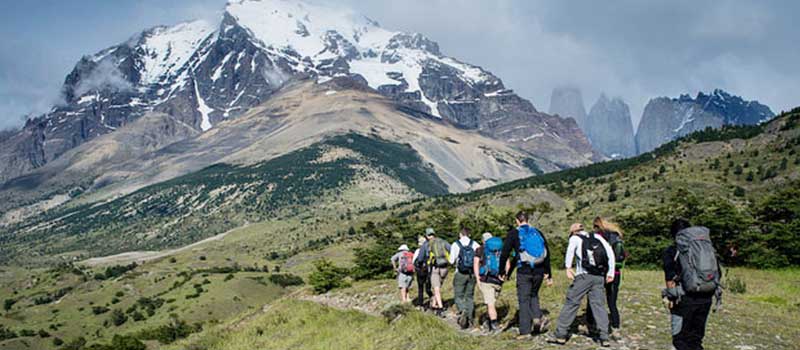
We start from our hotel after checking with our guide all the recommended equipment we will need for the excursion. We’ll go towards Grey Lake’s beach and during the route we will stop to see from a privileged view the winding curves of the Serrano River and its homonym town. Another affluent that we are going to find is going to be the mouth of the Grey River that mixes with the pristine waters of the Serrano River and together goes to finish in the Ultima Esperanza Fiord.
Back in the van our next stop will be the Administration where there will give us the welcome to the Torres del Paine National Park. We will continue our trip through the Grey Bridge to get into a forest zone that works as mimesis area for deer and pumas. After a wooded valley amazing ice mass will broke the sketch of the landscape. The road ends and the trekking begins in a path that this impressive glacier lived long time ago, this place will impress us with its huge ice blocks resting in the lake and sometimes fighting with the amazing wind that also will invite us to resist the strength of nature. Going back to our vehicle we will continue our trip until arrive to Paine River that is the main tributary on the area and it will guide us through the lacustrine system in the National Park. Near there the turquoise colour of the Pehoé Lake will surprise us. After that we will arrive to Pudeto shelter where after a walk of half an hour we will hear the deafening sound of the Nordenskjold Lake in the known “Salto Grande”, beside a wonderful view of the Paine Horns. After renewing our energy, we will continue enjoying our trip and seeing from different angles this massif. Then we will see the Sarmiento Lake, here the steppe invites herds of guanacos to run across the beautiful hills and in some viewpoints we will find some grey foxes curious about our presence. After some curves, we will arrive to Amarga Lagoon where (if the weather allows it) it will transform it in an amazing mirror that reflects the Torres del Paine. By the side of the lagoon, beautiful flamingos might be feeding.
We will continue in our route to be delighted by the sight of its unique fall, and then to the Azul lagoon which will cause a big impression because of its lively colour and, if nature allows us, we will be able to glimpse the Torres del Paine. After being mesmerized by the landscape of the park and having enjoyed some unique times we will return to our hotel for some well-deserved rest.
Difficulty: Medium - Low. / Duration: 8 hrs. / Departure at: 08:30 hrs.
-
Torres Base Trekking
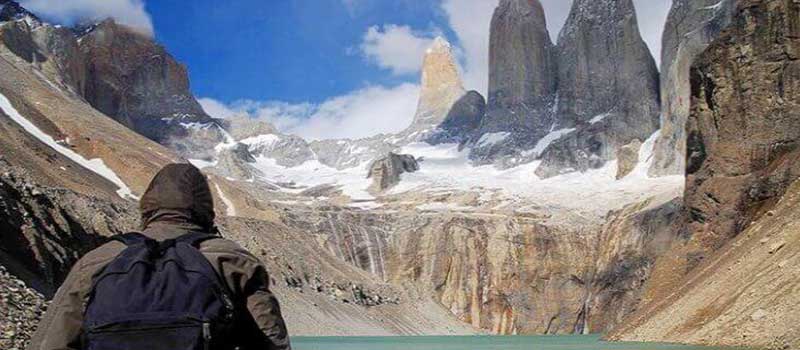
We start from our hotel after checking with our guide all the recommended equipment we will need for the excursion. We´ll go towards to the east zone of Torres del Paine National Park to ex Estancia Cerro Paine (54 km), where we will travel into the park for about 1 ½ hour. Once we arrive to the ex Estancia Cerro Paine area, we begin our trekking with a short speech about security.
We will cross a bridge that goes through the Ascencio River; this is a flow that descends from the valley that has the same name. Immediately our first big challenge begins with a slow trekking to get to the 500mts altitude. During this path we will see the Nordenskjold Lake surrounded by Chilean fire tree or Chilean fire bush. At the end of this first challenge, the amazing Ascencio Valley will show us the route that we have to follow to get our objective. A few minutes later we will arrive to the Chileno shelter located in the shore of the river. At this point, we will stop to recover energy and continue the next hour in a winding path surrounded by a forest of lengas (Notofagus Pumilio). Once we pass through this beautiful forest, we will begin with the last stage of the ascent that we will cross to arrive to the frontal moraine that was left by the antique Torres Glacier. We will go up slowly by a path marked with rocks of the moraine; this is the last stage that we need to do before arrive to the Torres Base. Along this amazing view also we will find the beautiful Torres Lagoon. Here we are going to stay to have lunch and enjoy the view that will surround us. Then, we begin our descent.
Difficulty: High. / Duration: 11 hrs. / Departure at: 08:00 hrs
-
French Valley Trekking
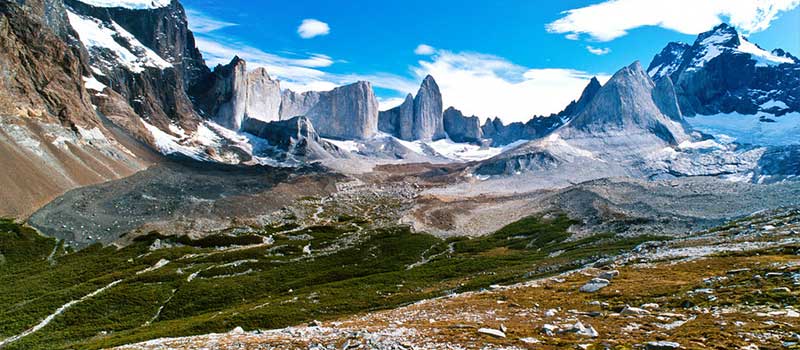
This is a complete trekking that has different interest’s points. This excursion has the advantage that you can see the Paine Massif from the south-west side, having a panoramic view of the Paine Grande and Cuernos from its opposite side, the opportunity to see them all the time, and the possibility to see the differences between the different kind of sedimentary rocks and granitic in the massif.
Our excursion towards to the French Valley begins at 08:30 hrs. Starting from the hotel to the pier of the Pehoé catamaran, we will sail for the turquoise waters of the Pehoé Lake about 30 minutes, once arrived we will go to the French Valley passing by a swing bridge over the French River. In our way back using the same route we will be on time to take the catamaran that set sail at 18:30.
Difficulty: Medium - Low. / Duration: 7 hrs. / Departure at: 08:30 hrs
-
Laguna Amarga And Sarmiento Vehicle Excursion (sendero Fauna)
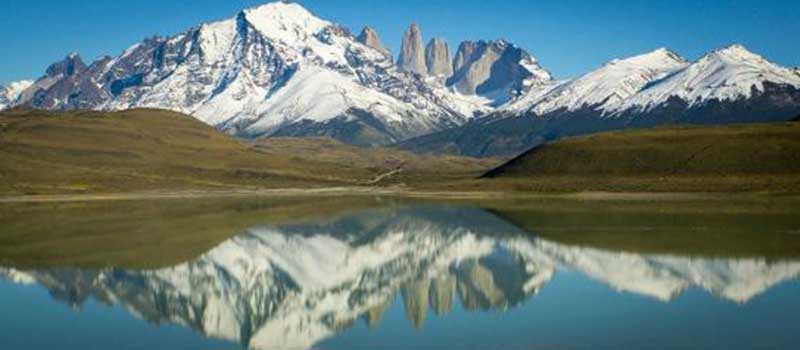
We begin from the hotel towards the main entrance of Torres del Paine National Park (Amarga – Sarmiento). To arrive there we have to cross almost all park. In this excursion you are going to see flora, fauna and also the Paine Massif. The main interest point is the cave paintings of the aboriginal people that lived at the zone. At this place you can make an anthropological or archaeological visit.
Difficulty: Low. / Duration: 5 hrs. / Departure at: 08:00 hrs
-
Salto Grande - Mirador Cuernos Vehicle Excursión
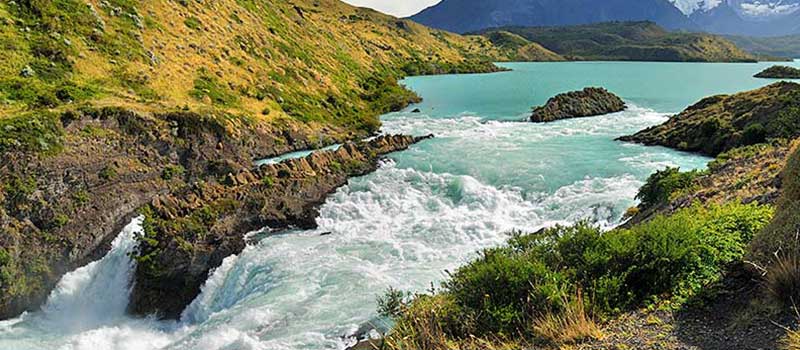
We begin from our hotel towards Pehoé Lake sector (Pudeto). Here we will do a trekking from the parking area to the Salto Grande. This waterfall has a 14mt height. Then we will follow the path that will take us to Los Cuernos viewpoint, here we could find flora and fauna of the area (orchids, Sand Lady's Slipper, capachitos, etc) also here we could see the Paine Grande, Cuernos, French Valley and Nordesnkjold Lake.
Difficulty: Low. / Duration: 3 hrs. / Departure at: 08:00 hrs
-
Monte Ferrier Viewpoint Trekking
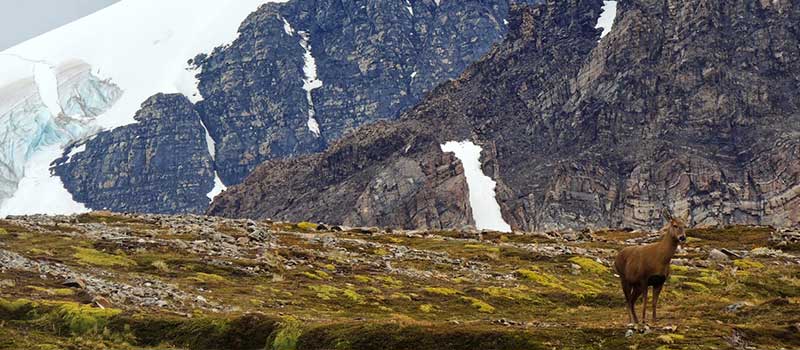
We begin from the hotel towards Grey area. The Ferrier Mountain, offers us an unforgettable way of excursion to people who love trekking and hiking. The top is at 1.559 mts height and at 600 mts you will find the Viewpoint. While we are going up, we will find a landscape surrounded by lakes, ice and mountains, until we get to a point where you can see all the lakes of the National Park. Here you also will see Pingo and Grey Glaciers and Paine Massif with its impressive top. This trekking lasts no more than 4 hours, but it is needed to be fit.
Difficulty: High. / Duration: 4 hrs. / Departure at: 08:00 hrs. – 14:00 hrs
-
Grey Navigation And Transportation
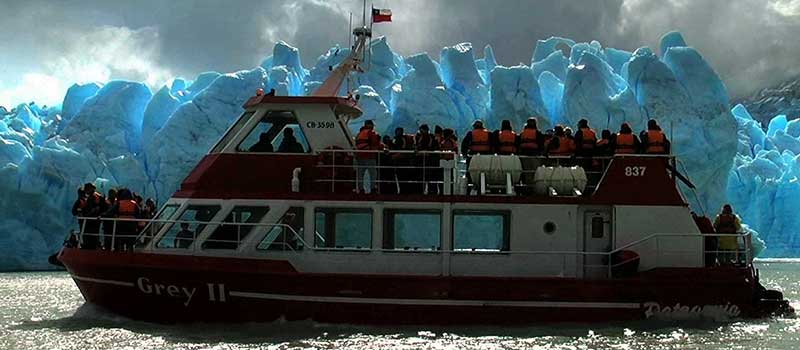
We begin our excursion from the hotel where during the road we will see Notofagus forests and also wild fauna. We will go towards Lago Grey Hotel to make the check in for the navigation which lasts 3 hours round trip. The passengers will get into the vessel, where we will visit the east and west face of the Grey Glacier.
The navigation gets really close to the glacier, but it depends on the glacier detachment, sometimes it is possible to see some icebergs floating on the lake.
A vehicle from the hotel will be waiting for us at the end of the excursion.
Difficulty: Low. / Duration: 4 hrs. / Departure at: 06:30am – 13:30pm
-
Serrano River Navigation
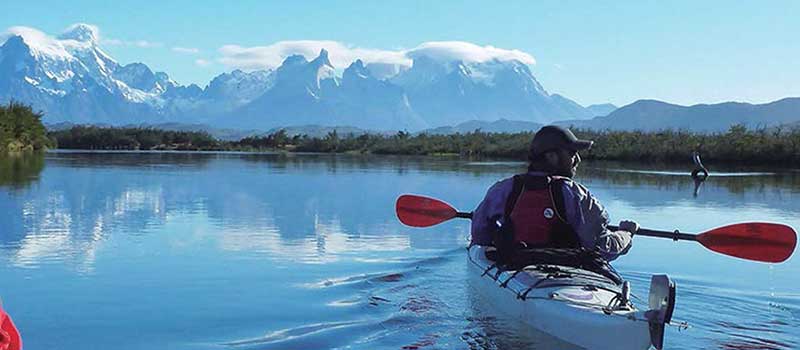
The departure point will be the pier of the Serrano River to begin the descend on zodiac boats through the Serrano River. We´ll visit the waterfall and the main attractions that surround this place characterized by native forests, mountains and glaciers that decorate the landscape. Then we will make a short stop to have a rural breakfast at Estancia Anita with a short speech of history and actual information. We will continue our trip through the Serrano River and Última Esperanza Fiord. We´ll arrive to Bernardo O’Higgins National Park where we will visit the Balmaceda Glacier and do a trekking to get closer to the Serrano Glacier. Once back in the vessel, finishing our trip, we will go back to the Serrano River.
Difficulty: Low. / Duration: 8 hrs. / Departure at: 09:00 hrs.
-
Condor Viewpoint Vehicle Excursion
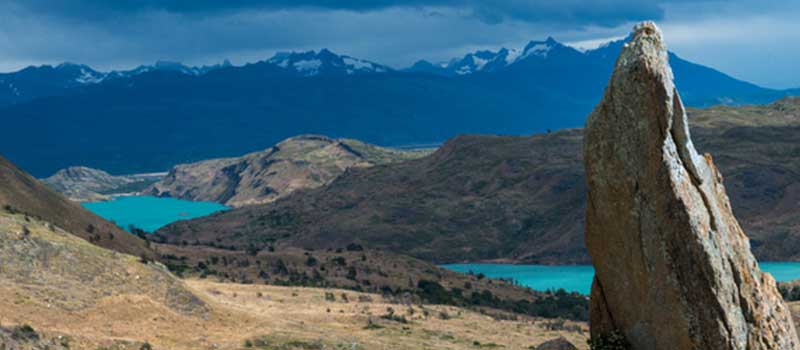
We begin from the hotel towards Pehoé area. In front of the Pehoé camping we will find the path that will take us to the Condor Viewpoint after ascending for about 1 hour. We will have one of the most privileged views in the park, seeing the Paine Massif, its lakes, rivers, flora and fauna. Also we will see the intense colour of the Pehoé Lake and sometimes if it’s possible see Condors flying. Then we´ll go back for the same path.
One of the things you have to consider is the strong wind that is at the viewpoint.
Difficulty: Medium. / Duration: 3 hrs. / Departure at: 08:00 hrs
-
Nutria River Horseback Riding
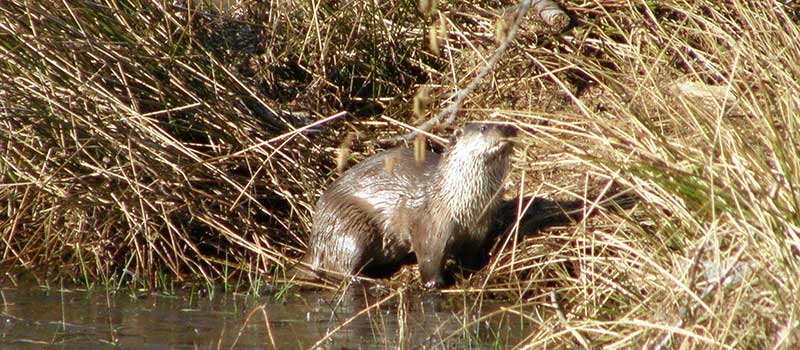
We begin from the hotel towards the stable of the Astorga family which will give us the equipment and the instructions to do this excursion. From there we will go towards south- west along of the shore of the Serrano River, arriving to the junction of the Grey and Serrano River. In this excursion you could see the different colours of these rivers and at the same time the magnitude of the Paine Massif in its entire splendour. Then we will go east along the shore of the Nutria River and getting into Notofagus forests. Here we can have the opportunity to see flora and fauna of the area. Once finished our excursion we will go back to the hotel.
Difficulty: Low. / Duration: 2 hrs. / Departure at: 10:00 hrs. – 14:00 hrs
South Patagonia / Punta Arenas
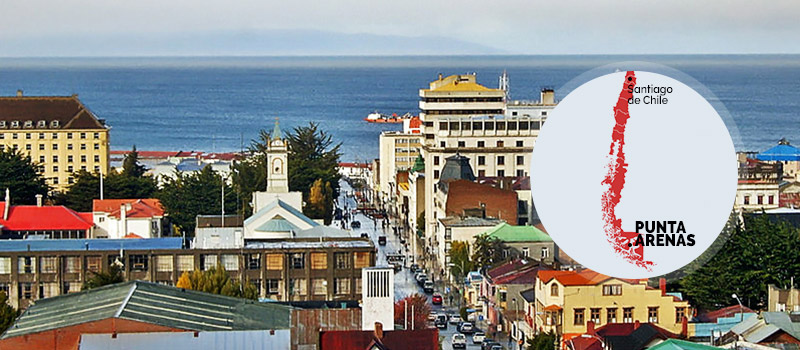
southernmost city and starting-point for excursions and cruises amongst the fjords of southern Patagonia and to Antarctica.
What can we do in Punta Arenas ?
-
Punta Arenas City Tour
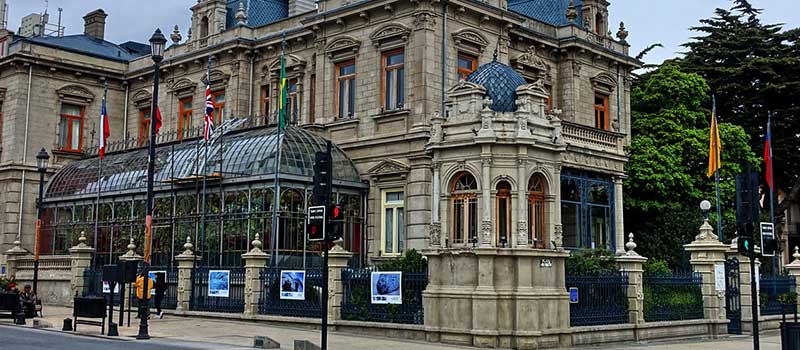
This tour will allow us to get to know this interesting Patagonian city. Muñoz Gamero Main Square, declared typical zone in 1991. Sara Braun Palace, whose construction dates between 1894 and 1905, declare National Monument, today housing the Union Club. Cathedral Church (old Salesiani). Free Zone with tax exempted imported goods. Cerro de la Cruz, for a panoramic view of the city up to Tierra del Fuego (Fireland). Patagonia Institute, for information with respect to science and Patagonian culture. Municipal Theatre, located in the place that occupied the first Fort of Punta Arenas in 1848. Braun Menéndez Regional Museum, declared National Monument and where since 1983 operates the Magallanes Regional Museum, housing the region´s contemporary history. Regional Salesiano Maggiorino Borgatello Museum, largest in the area, with a comprehensive collection of regional items, of the ona (*) culture and exhibits of Antarctica.
(*) Onas, also known as selknam people were an indigenous people of the northern part of the isla Grande de Tierra del Fuego.
-
Fort Bulnes
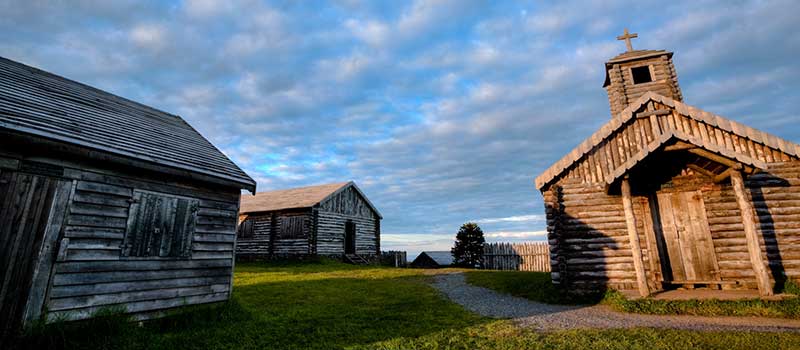
Chilean Fort located by the Strait of Magellan, 62 km south of Punta Arenas, founded in 1843 because of colonizing policies in the South of Chile. The Ancud ship, under the command of Captain Juan Williams, anchored on September 21, 1843 in Punta Santa Ana, proceeding to take possession of the Strait of Magellan and adjacent territories on behalf of the Government of Chile. This Fort established sovereignty over the Strait just 24 hours before the arrival of a French expedition in the “le Phaethon” frigate that was looking for the same purposes. The year 2013, the State of Chile invests in the Park undergoing an archaeological restoration and reconstruction of this historic site.
-
Penguins Of Magdalena Island
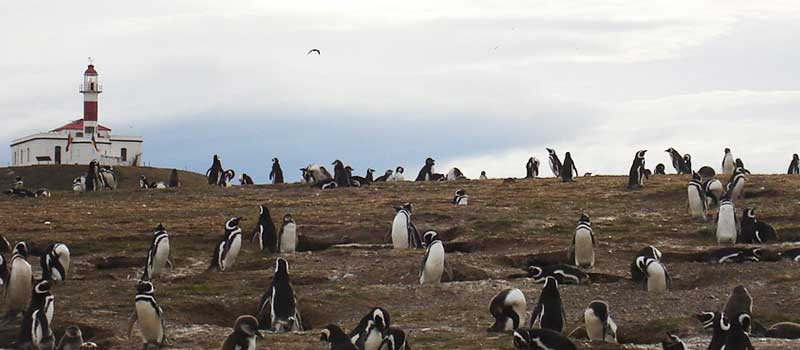
Natural habitat for the Magellanic penguin (Spheniscus magellanicus), cormorants and sea lions, among others. Sizes are between 35 and 45 cm in height and 3 k weight. The head is black with a white strip going from the eyes, around the ears and chin, to join in the throat. They have greyish black plumage on the back and white on the front, with two black bands between head and torso. These two bands distinguish it, for example, from the Humboldt Penguin, presenting only one. The colors of the feathers represent an evolutionary adaptation, an efficient mimicry in the marine environment. When all submerged, their dark backs go unnoticed from above as they confuse with the dark tones of the deep sea, and, conversely, the white torso is mixed with the brightness of the surface. * The island accessed by boat from Tres Puentes terminal in the city of Punta Arenas. 20 miles, 2 hours of navigation. In this area, the navigation is complex because of the joining currents coming from the Pacific and the Atlantic oceans. Navigation usually takes no more than half an hour, but they can also take up to two depending on current conditions.
*Penguin season from November until the first half of March. Fishing near the island prohibited to preserve the species.
-
Penguins Of The Otway Sine
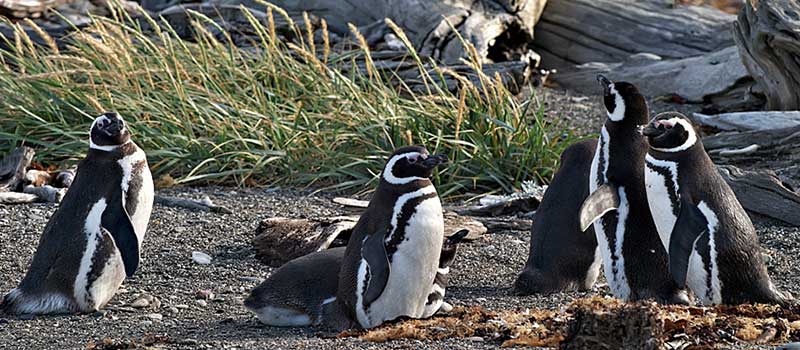
Located 65 km. north of Punta Arenas in an 80 hectares area, which stretches along 2 km. of coast, it is possible to observe a colony of Magellanic penguins, (Sphenicus magallanicus). These birds of approximately 70-cm. height are better adapted to the marine environment, to such an extent that they have lost the ability to fly. Its body, covered with small feathers and wings have become flippers for swimming. In 1990, the colony had only 500 species today are more than 2,500 pairs of penguins and about 10,000 birds in total, which appear between October and March.
*Open from October 15 to March 31, Mon to Sun. *Lately, penguin colony decreasing in number, consider Magdalena Island as a better option.
-
King Penguin Park On Fireland
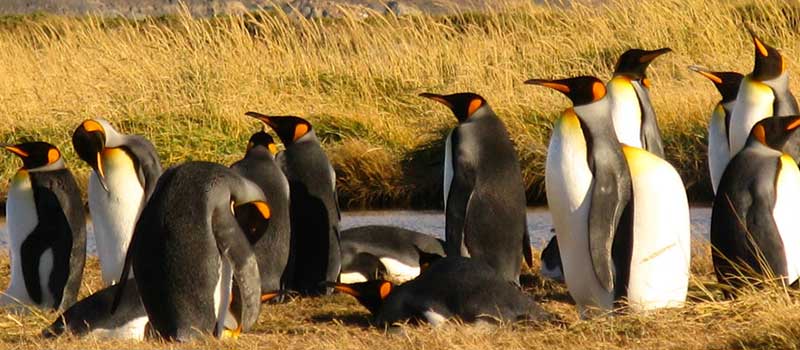
The tour starts in Punta Arenas with the transfer to the Tres Puentes ferry terminal, to board a modern vessel and cross the legendary Strait of Magellan. After approximately 2 hours of navigation, arrival at Fireland. Once on the island, brief visit to the interesting Porvenir Regional Museum, to delve into the rich, archaeology, anthropology and history of the Selk´nam people (Fireland aborigine). After lunch, at a local restaurant, drive for approximately 114 kms towards the King Penguin Park, (Aptenodytes patagonicus), only colony of this species in the Southamerican continent, second most large after the Emperor Penguin (Aptenodytes forster). Short walk to access the habitat of this beautiful bird, usually whipped by strong winds but chosen by this young colony to remain throughout the year, achieving from 30 to 80 individuals. King penguin, the top of his chest, at the height of the throat, is yellowish-orange, grey back up to its tail bordered by a black line. Its belly is white and its head is black with a long pointed beak orange in color. The legs are adapted for swimming in the water.
Subsequent to this visit, the return trip starts by crossing Tierra del Fuego in a journey of approximately 130 kms to reach the narrow sector of the Strait of Magellan, to board ferry in a 20-minute return trip to the continent. From here and with a beautiful view over the Patagonian pampas, drive 170 kms to the dock in Punta Arenas.


